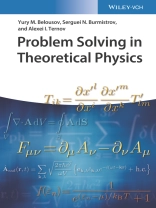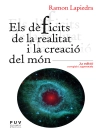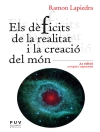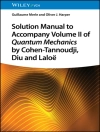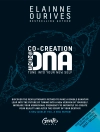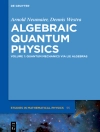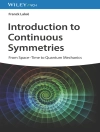‘Problem Solving in Theoretical Physics’ helps students mastering their theoretical physics courses by posing advanced problems and providing their solutions – along with discussions of their physical significance and possibilities for generalization and transfer to other fields.
Tabella dei contenuti
Preface to the English Edition ix
Preface ix
About the Companion Website xiii
Part I Problems 1
1 Field Theory 3
Introduction 3
1.1 Vectors and tensors in Euclidean space 27
1.2 Vectors and tensors in Minkowski space 29
1.3 Relativistic kinematics 29
1.4 The Maxwell equations 33
1.5 The motion of a charged particle in an external field 36
1.6 Static electromagnetic field 38
1.7 Free electromagnetic field 39
1.8 The retarded potentials and radiation 39
1.9 Electromagnetic field of relativistic particles 42
1.10 The scattering of electromagnetic waves 43
2 Quantum Mechanics 45
Introduction 45
2.1 Operators and states in quantum mechanics 64
2.2 One-dimensional motion 65
2.3 Linear harmonic oscillator 68
2.4 Angular momentum and spin 69
2.5 Motion in a magnetic field 71
2.6 Motion in a centrally symmetric field 72
2.7 Semiclassical approximation 73
2.8 Perturbation theory 74
2.9 Relativistic quantum mechanics 76
2.10 Addition of angular momenta. The identity of particles 77
2.11 Theory of atoms and molecules 78
2.12 Theory of scattering 80
2.13 Theory of radiation 81
3 Statistical Physics 83
Introduction 83
3.1 The Gibbs distribution: thermodynamic quantities and functions 112
3.2 Ideal quantum gases 116
3.2.1 The ideal Fermi gas 116
3.2.2 The ideal Bose gas 118
3.2.3 Ideal gases of elementary Bose excitations 119
3.3 Non-ideal quantum systems (liquids): the fundamentals of condensed matter theory 121
3.3.1 Normal (nonsuperfluid) Fermi liquids 121
3.3.2 Superconductivity and the BCS theory 122
3.3.3 Weakly interacting Bose gases and the Gross-Pitaevskii equation 124
3.3.4 Theory of superfluidity 125
3.4 Phase transitions and critical phenomena 126
3.4.1 The mean-field approximation 126
3.4.2 The Ginzburg-Landau functional 127
3.4.3 Fundamentals of the theory of critical phenomena 130
Part II Solutions of Problems 133
1 Field Theory 135
1.1 Vectors and tensors in Euclidean space 135
1.2 Vectors and tensors in Minkowski space 138
1.3 Relativistic kinematics 138
1.4 The Maxwell equations 163
1.5 Motion of a charged particle in an external field 168
1.6 Static electromagnetic field 185
1.7 Free electromagnetic field 194
1.8 The retarded potentials and radiation 196
1.9 Electromagnetic field of relativistic particles 213
1.10 The scattering of electromagnetic waves 224
2 Quantum Mechanics 235
2.1 Operators and states in quantum mechanics 235
2.2 One-dimensional motion 239
2.3 Linear harmonic oscillator 257
2.4 Angular momentum and spin 259
2.5 Motion in a magnetic field 264
2.6 Motion in a centrally symmetric field 273
2.7 Semiclassical approximation 282
2.8 Perturbation theory 286
2.9 Relativistic quantum mechanics 298
2.10 Addition of angular momenta. The identity of particles 310
2.11 Theory of atoms and molecules 316
2.12 Theory of scattering 332
2.13 Theory of radiation 345
3 Statistical Physics 353
3.1 The Gibbs distribution: the thermodynamic quantities and functions 353
3.2 Ideal quantum gases 380
3.2.1 The ideal Fermi gas 380
3.2.2 The ideal Bose gas 401
3.2.3 Ideal gases of elementary Bose excitations 412
3.3 Non-ideal quantum systems (liquids): the fundamentals of condensed matter theory 416
3.3.1 Normal (nonsuperfluid) Fermi liquids 416
3.3.2 Superconductivity and the BCS theory 425
3.3.3 Weakly interacting Bose gases and the Gross-Pitaevskii equation 432
3.3.4 Theory of superfluidity 441
3.4 Phase transitions and critical phenomena 447
3.4.1 The mean-field approximation 447
3.4.2 The Ginzburg–Landau functional 452
3.4.3 Fundamentals of the theory of critical phenomena 471
Appendices 487
Bibliography 493
Index 497
Circa l’autore
Yury M. Belousov is Researcher and Lecturer at the Moscow Institute of Physics and Technology, Dolgoprudny, Russia.
Serguei N. Burmistrov is Researcher and Lecturer at the Russian Research Center ‘Kurchatov Institute’, Moscow, Russia.
Alexei I. Ternov is Researcher and Lecturer at the Moscow Institute of Physics and Technology, Dolgoprudny, Russia.
